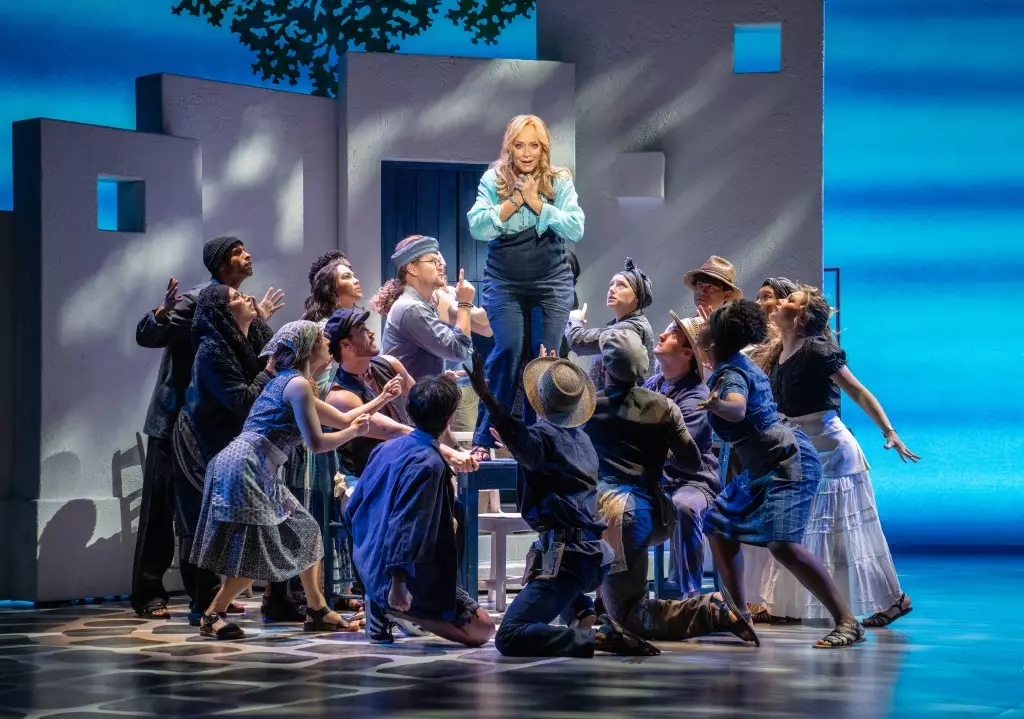In a landscape where most Broadway productions are grappling with declining audiences, the triumphant debut of *Mamma Mia!* at the Winter Garden Theatre stands out as a beacon of resilience. The musical’s entirely sold-out preview, grossing nearly a quarter of a million dollars on its first night, signals an unexpected but well-deserved return of a beloved classic. Unlike other shows that suffered attendance slumps, *Mamma Mia!* offers a nostalgic escape that seems impervious to current economic or cultural turbulence. Its success underscores a broader phenomenon: that certain types of entertainment—particularly musical revivals rooted in familiar tunes—maintain an almost magnetic pull amid adversity. It suggests that Broadway’s core strength isn’t just in its innovative productions but in its capacity to leverage cultural nostalgia and established brands to anchor audiences even as the industry faces existential challenges.
The Economic Reality of Broadway: A Spotlight on Big Earners and Lingering Struggles
While *Mamma Mia!* shines, the overall financial landscape reveals a pragmatic picture. Despite a handful of blockbusters like *Wicked* and *Hamilton*, most productions are struggling to fill seats and turn a profit. The week’s gross of roughly $30 million, representing a 5% decline from the previous week, exposes a fragile recovery—audiences remain cautious, and economic headwinds continue to haunt even the most high-profile shows. The lingering disparity in ticket prices further complicates the financial stability of Broadway; *Just In Time* with an average ticket costing over $231 exemplifies the premium placed on top-tier shows, yet the gap between high-ticket prices and dwindling attendance in less popular shows like *Gypsy* emphasizes a widening divide in the industry. This uneven landscape raises critical questions about the future sustainability of Broadway’s diverse offerings and whether the high ticket prices are sustainable amid waning interest.
The Power of Nostalgia and Established Success Models
The enduring success of long-standing shows such as *The Lion King* and *Wicked* reveals a key insight: familiarity breeds resilience. Their steady draws, even in a declining market, stem from brands that have rooted themselves deeply into the cultural fabric. This phenomenon fuels a debate about whether Broadway’s future hinges on doubling down on nostalgia and proven successes or if it can innovate its way out of this rut. The industry’s heavy reliance on established icons suggests a conservative approach—one rooted in capitalizing on history rather than daring new ventures. From a pragmatic standpoint, it’s an understandable strategy: proven performers attract audiences, secure financing, and deliver consistent revenue. Yet, it also raises concerns about whether this approach stifles creative innovation, risking stagnation in a rapidly changing entertainment world and limiting opportunities for new voices to emerge.
The Implication of Pricing Strategies and Audience Confidence
Pricing remains a double-edged sword in Broadway’s current context. While premium tickets, exemplified by shows like *Just In Time*, generate high revenues per seat, they may also alienate potential audiences who are increasingly budget-conscious. The average ticket price hovering around $127 hints at ambitions for high margins, but the modest capacity fill rates in some productions suggest that price hikes could backfire, further dampening attendance. Underpinning this issue is audience confidence—are patrons willing to invest in live theater amidst economic uncertainty and shifting cultural priorities? It’s a delicate balancing act: maintaining profitability without pricing out loyal and new audiences alike. The industry’s challenge lies in innovating pricing models that foster accessibility while safeguarding financial health, a task that demands both marketing savvy and a genuine understanding of audience psychology.
Amid these complex dynamics, Broadway stands at a crossroads. The optimistic initial sign of *Mamma Mia!*’s success offers a glimmer of hope—a demonstration that classic musicals and well-loved brands can still evoke enthusiasm. Yet, the broader economic and cultural indicators suggest resilience isn’t yet secured. The industry’s future hinges on its ability to adapt—embracing innovation without abandoning proven formulas, balancing profitability with accessibility, and fostering an environment where both new talents and nostalgic favorites can coexist. Lurking behind the current statistics is an undeniable truth: Broadway’s vitality depends on its capacity to evolve while maintaining the core appeal that once made it the heart of America’s theatrical landscape.

